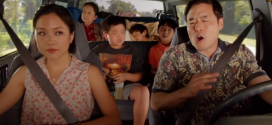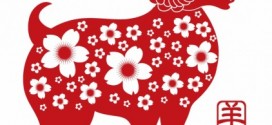By Amanda L. Andrei

“Do you think it was a suicide?” my friend asked.
“No.” I gripped my phone tightly at the thought. “No. There’s no way. It must have been a car accident. I spoke to him last Thursday. I told him I would call him back. Or a health problem. It must have been an accident. There’s no way. There’s no way.”
One of my best friends from college, S, was dead. I had received the news last night, first via text message and then through a frantic phone call. No other details. Our friends frantically combed through his Facebook page and saw only condolences from classmates. We scoured his city’s online newspapers to find news of an accident. Nothing. Only a digital obituary, his pre-graduation photograph starkly black-and-white next to the text.
Died suddenly. Law student. Age 24.
When I finished our conversation, I put down my phone and dropped on the couch. It was April of last year. Final exams time. It was raining outside. S would never see rain again.
Another friend called back that morning and confirmed it. S had taken his own life.
The rain slid down the balcony door. It seemed it would never end.
When I started this article, I wanted to be objective. I wanted to write about S and suicide within the Asian American Pacific Islander (AAPI) community while maintaining journalistic propriety between myself and the subject matter.
But when I attended the White House AAPI briefing on Suicide Prevention and Mental Health on May 10, I realized that many of the advocates for these issues are “suicide survivors” themselves – meaning they survived the trauma of a loved one who died by suicide. Their advocacy for better healthcare and treatment is borne out of a great love that no one should ever suffer anguish so great that is pushes them to fatality, or like them, experience the fallout of self-inflicted death.
And so this is a story of S. And myself, and the friends and community impacted by his struggles. We are suicide survivors. And we are part of the AAPI community.
S was one of the first people I met when I transferred colleges. We bonded over the fact that we were both half-Filipino and shared a love of history and literature. Even after he graduated and I was still in school, S called me frequently, mentoring me through leadership duties in our Filipino American student organization and relating both sad and hilarious stories of life in law school. After his first year finished, we worked the same summer job and saw each other every day.
I only saw him once more after that summer—that Christmas, when we were both working again, and we decided it would be our last gigs at our seasonal jobs. He was going to buckle down and get serious with law school; I was going to live the yuppie life in Washington D.C. We drifted in and out of each other’s lives, but each time we spoke on the phone, he was still my warm and charming friend, dispensing advice and hysterical anecdotes.
And so the week before that terrible phone call, we talked on the phone one Thursday evening. He sounded fine—perfectly fine—and I apologized for ignoring his calls of late and not being around. I wanted to tell him I was planning to see him graduate, but said nothing, intending it to be a surprise. I cut our conversation short—it had already been an hour—and promised to call him next week.
When I called him next Thursday, there was no answer. And then that Saturday, I had my answer.
Let me be clear on this next point. I don’t know how much of S’s “Filipino-ness” or the fact that he was part of the AAPI community factors significantly in his decision to die. There are many variables involved in choosing suicide within the AAPI community, such as language barriers, cultural ideals about concepts like honor, different definitions of “wellness” and more, but I am doubtful as to how many of those were meaningful for S.
Certainly he felt the burden of perfection. Certainly he felt the pressures of an unforgiving and harried world. And certainly he had been more isolated than his years post undergraduate life. But were these attributable or unique traits of being of Asian American descent in America?
In a way, that question doesn’t matter. His death impacted everyone near and dear to him, no matter what their heritage. Perhaps the only difference is that Asian Americans dealt with the matter a little differently.
Some of our friends expressed their grief through traditional Filipino and Catholic customs, singing songs and lighting candles. For one friend, it triggered her own memories of struggles with suicide and depression: “I had to deal with the shame (nakakahiya) of having these feelings. I wasn’t allowed to talk about it with others because it would bring shame to the family.”
“Why did he do it?”
This question ran through my mind nonstop in the days and weeks after. Only after months of slowly unfolding this question and hearing other people’s experiences with suicide and depression, was I able to grasp at the shadows of his thoughts.
According to the Center for Disease Control and Prevention, many times the causes for suicide are depression or substance abuse. Histories of mental disorders, family histories of suicide, and surviving traumatic experiences (such as a car accident) can also factor into a person’s decision to die. And often there are warning signs—a person’s increased interest in morbidity, social isolation, comments of hopelessness or loneliness, threats to hurt himself. If one can recognize the signs, suicide is preventable.
But as far as we knew, S exhibited none of these signs. Or maybe he did, but in secret. I never knew him to be depressed, but then again, my only contact with him was through phone and online chat. I never saw his day to day life. I would have never been able to gauge something like depression. Then again, neither were those who lived with and near him.
Five months after S died, I attended a talk delivered by Dr. Thomas Joiner, a psychologist and professor at Florida State University and a leading expert on suicide. Dr. Joiner proposed a theory as to why people commit suicide, as based on three conditions:
- The individual perceives that he or she is a burden to others: family, friends, society.
- The individual perceives that he or she is socially isolated or alienated (this may be self-imposed or part of a larger case of bullying or social ostracizing).
- The individual loses fear of physical pain and harm—effectively overcoming the basic human instinct to survive.
When these three conditions are met, a person is dangerously close to following through on a decision to end his or her life. Coming to this decision is not easy—a chilling idea when I thought of how S must have deliberated over this.
Equally chilling are the statistics of suicide. According to the American Foundation for Suicide Prevention, more than 38,000 people die by suicide in the United States every year. Close to one million people make a suicide attempt. In 2010, suicide was the tenth leading cause of death for all ages. Among 15-24 year olds, it is the third leading cause of death—meaning that it outranks any deaths caused by natural diseases in that age bracket.
Focusing on the AAPI community, the Substance Abuse and Mental Health Services Administration reports that while AAPIs have lower rates of mental illness when compared to other racial groups, AAPIs also have the lowest rates when it comes to seeking mental health services and support—and also do not seek or engage in the services in a timely matter. This means that AAPIs may actually be experiencing higher rates of mental illness and major depressive episodes—only it is not identified or reported.
Additionally, the AAPI community is vastly diverse—for example, a recent female immigrant with a language barrier who experiences bullying will have different sources of pain and burden than an elderly second generation male who has lost his family in a car accident. As a result, they need different sources of culturally competent treatment and services. Suicide is preventable—and the support provided needs to not only be more visible and accessible from providers, but actively championed within communities.
One of our mutual friends, Angela, made an astute observation: “It’s interesting that people will freely discuss going to physical therapy for their shoulder, or their hip, or their knees, but never do people say that they’re going to mental therapy and they’ll be back in an hour. It would be great if we could get to this point where people are comfortable talking about it.”
I suppose this article is one of my ways of talking about it, of championing this issue. And there are other ways. I spend more time with my friends. I am more sensitive to signs of stress and depression, especially among my peer group. And I try to take care of my own mental health—not stressing out too much and staying hopeful of the future. I think all of us—all the friends of S—feel similarly.
Free will… or mental disorder? Calculated choice… or chemical imbalance? I will never truly know how he came to his decision. And after over a year—a year filled with grief, rage, guilt, and sadness of the deepest degrees—I have realized that whatever his reasons, it can’t bring him back. So I choose not to dwell on how he died—rather, I celebrate how he lived. I choose to forgive, and I choose to hope. And it is my hope that somehow, this story will help others realize that they are not alone. Somehow, the rain will end.
If you believe a suicide attempt is imminent, do not leave the person alone. Call 911 or a suicide crisis hotline such as the National Suicide Prevention Lifeline (1-800-273-8255). If you suspect someone has suicidal thoughts, directly ask if he or she is considering suicide. If the person says “yes,” take it seriously and help him or her obtain professional help.
On June 1 in Washington D.C., the AFSP is hosting the Out of the Darkness Overnight Walk, a 16 to 18-mile overnight walk aimed at raising funds and awareness for suicide prevention. For more information, visit www.TheOvernight.org or call 888-The-Overnight (888-843-6837).
If you are dealing with the aftermath of a loved one who died by suicide, please remember: you couldn’t change what happened. You did the best you could with what you knew at the time. Over time, it will get better.
Asian Fortune is an English language newspaper for Asian American professionals in the Washington, DC metropolitan area. Visit fb.com/asianfortune to stay up to date with our news and what’s going on in the Asian American community.
 Asian Fortune Your source for all things Asian American
Asian Fortune Your source for all things Asian American




Hi Amanda, my name is Ramey Ko, and I was one of the Commissioners that was part of the White House AAPI Briefing on Suicide Prevention and Mental Health (I was the one who spoke about learning about my own bipolar disorder just a couple of years ago). Thank you for sharing your personal story, and for speaking up to move this urgent issue out of the shadows. I want you to know that our White House Initiative on Asian Americans and Pacific Islanders staff has been sharing this article around and with our commissioners. This is the type of conversation we hoped to start with our event. Thank you again for your courage and your compassion.